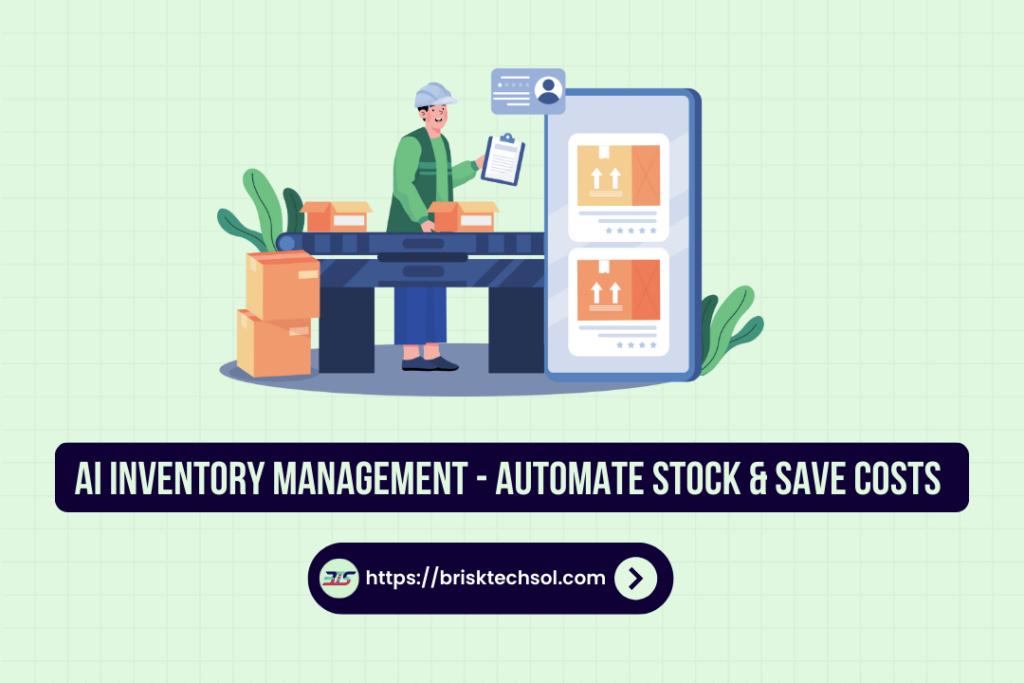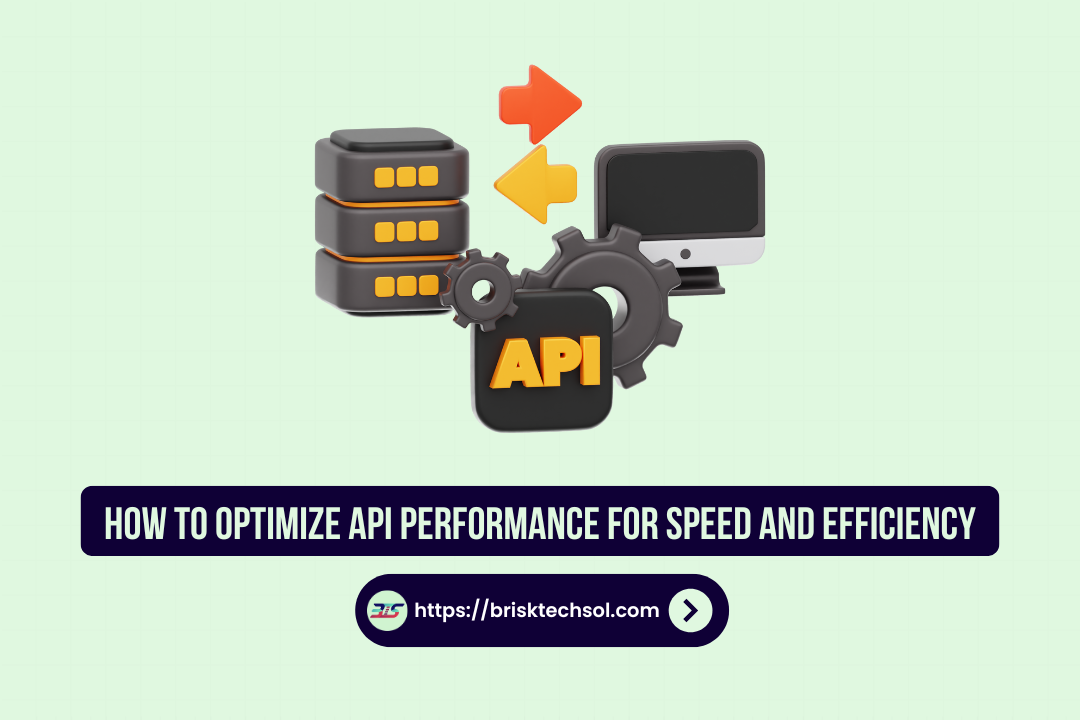Imagine being able to predict exactly what your customers need before they even ask. AI inventory management makes that possible by taking the guesswork out of stock control. In this article, we explore how smart algorithms and real‑time data transform inventory management, reduce costs, and boost efficiency. Experience a new era of intelligent stock control that propels your business forward.
What is AI Inventory Management?
AI inventory management uses artificial intelligence to automate and optimize traditional inventory control methods. By analyzing large datasets—from historical sales and seasonal trends to supplier delivery times AI systems forecast future demand and adjust stock levels accordingly. This technology minimizes human error, reduces excess inventory, and cuts costs, offering businesses an agile solution that responds in real time.
🔹 Key Characteristics:
- Data‑driven demand forecasting
- Automated reordering processes
- Real‑time analytics and reporting
- Seamless integration with ERP and supply chain systems
How Does It Work?
At its core, AI inventory management employs machine learning and predictive analytics to process data from various sources. Historical sales figures, market trends, and even external factors like weather conditions are fed into sophisticated algorithms that continuously refine forecasts. These systems integrate with existing ERP solutions and IoT devices to capture live data, ensuring decisions are based on the most current information available.
🔹 Core Technologies Involved:
- Machine learning algorithms for predictive modeling
- Big data processing for handling vast datasets
- Cloud computing for scalability and real‑time access
- IoT sensors for live inventory tracking
Why It Matters
Traditional inventory systems often struggle with overstock or stockouts, leading to lost revenue and inefficiencies. AI inventory management tackles these issues head-on by providing accurate forecasts and automating stock control. This results in fewer manual errors, better customer satisfaction, and a significant reduction in operational costs. In an era where supply chain agility is critical, AI systems offer the competitive edge needed for success.
🔹 Benefits at a Glance:
- Increased forecasting accuracy
- Reduced operational costs
- Enhanced customer satisfaction
- Streamlined supply chain operations
Core Components and Architecture
Data Collection and Integration
Robust data collection is the backbone of any AI inventory management system. Data is gathered from multiple sources such as historical sales records, supplier information, seasonal trends, and external factors like weather or economic indicators. All these data points are integrated into a centralized platform, ensuring that the AI algorithms have access to accurate, real‑time information. Consistent, clean data is essential for reliable predictions.
🔹 Essential Data Sources:
- Historical sales and transaction data
- Supplier lead times and delivery schedules
- Market trends and consumer behavior analytics
- External variables (weather, economic conditions)
Machine Learning and Predictive Analytics
Once data is collected, machine learning algorithms take center stage. These models analyze trends and learn from historical patterns to predict future demand. Techniques such as regression analysis, neural networks, and time‑series forecasting enable the system to generate accurate predictions. The more data processed, the more refined the model becomes, ultimately driving down errors and ensuring a precise balance between supply and demand.
🔹 Key Features of the Algorithms:
- Continuous learning from new data
- Time‑series analysis for trend prediction
- Regression and neural network models for accuracy
- Anomaly detection to flag irregular patterns
Real Time Monitoring and Reporting
Real-time monitoring is critical for proactive inventory management. Dashboards provide live updates on stock levels, and automated alerts notify managers when inventory reaches critical thresholds. Customizable reporting tools allow decision-makers to drill down into specific areas and understand performance metrics at a glance. This dynamic system ensures that any deviations from expected trends are quickly addressed, reducing the risk of stockouts or overstock.
🔹 Real-Time Features Include:
- Live dashboards displaying current inventory levels
- Automated reorder alerts for critical thresholds
- Customizable reports for in-depth analysis
- Integration with IoT sensors for continuous monitoring
Below is an example table summarizing the core components:
| Component | Function |
|---|---|
| Data Collection | Gathers data from sales, suppliers, and external sources |
| Machine Learning | Analyzes data and predicts demand using advanced algorithms |
| Real-Time Monitoring | Provides live updates and alerts to manage inventory proactively |
Benefits and Advantages
Enhanced Forecasting Accuracy
One of the most significant advantages of AI inventory management is its ability to forecast demand with high accuracy. By processing vast datasets and continuously learning, AI minimizes the risk of human error and predicts market trends more reliably. This enhanced accuracy translates into fewer stockouts and overstock situations, ensuring that inventory levels match actual demand. Ultimately, businesses enjoy smoother operations and improved resource planning.
🔹 Forecasting Benefits:
- Minimizes the risk of stockouts
- Reduces excess inventory and associated costs
- Optimizes resource allocation and planning
- Improves overall supply chain responsiveness
Cost Reduction and Operational Efficiency
Automation through AI dramatically reduces the need for manual intervention, cutting labor costs and eliminating human errors. The real-time insights provided by AI systems allow businesses to streamline their processes, reduce waste, and lower storage expenses. Companies can reallocate resources to more strategic activities, ultimately enhancing operational efficiency. The resulting cost savings directly impact the bottom line, making AI an investment that pays off over time.
🔹 Operational Advantages:
- Reduced manual processing and labor costs
- Lower storage and inventory holding costs
- Increased speed and efficiency in order fulfillment
- Enhanced overall productivity
Improved Customer and Supplier Relationships
Accurate inventory management ensures that products are available when customers need them, boosting satisfaction and loyalty. AI systems help prevent stockouts and enable businesses to maintain a consistent supply, which in turn strengthens relationships with both customers and suppliers. With precise demand forecasting, companies can negotiate better terms with suppliers and improve lead times, further solidifying these relationships and fostering a more resilient supply chain.
🔹 Relationship Benefits:
- Higher customer satisfaction and retention
- Reliable product availability and faster delivery times
- Improved negotiation power with suppliers
- Strengthened supplier partnerships
Scalability and Adaptability
AI systems are designed to grow with your business. Their continuous learning capabilities ensure that they adapt to changes in consumer behavior and market conditions. Whether you’re a small business or a large enterprise, AI inventory management can scale to meet your needs. This adaptability means that as your business evolves, your inventory system remains agile and responsive, ensuring long-term operational success.
🔹 Scalability Highlights:
- Systems that grow with your business
- Continuous improvement through adaptive learning
- Flexibility to handle market fluctuations
- Future-proofing your inventory management process
Challenges and Limitations
Data Quality and Integration
While AI offers remarkable benefits, its effectiveness hinges on the quality of data fed into the system. Inconsistent or incomplete data can lead to inaccurate forecasts, which in turn may result in inventory imbalances. Integrating data from various legacy systems, ERP platforms, and external sources can be complex. Organizations must invest in robust data management practices, including regular audits and standardization, to ensure that their AI models receive accurate and consistent input.
🔹 Common Data Challenges:
- Inconsistent data formats across systems
- Incomplete or outdated records
- Complex integration with legacy systems
- Data silos that limit comprehensive analysis
Implementation Costs and Resource Requirements
Deploying an AI inventory management system often requires significant upfront investment. Costs can include technology acquisition, software licenses, integration expenses, and employee training. For small and medium-sized enterprises, these initial expenses may be a barrier. However, a phased implementation strategy can help mitigate costs, and the long-term savings from improved efficiency and reduced waste typically justify the investment.
🔹 Cost-Related Considerations:
- High initial setup and integration costs
- Ongoing expenses for system maintenance and updates
- Need for specialized technical expertise
- Investment in employee training and change management
Resistance to Change
Adopting AI-driven inventory management often requires a cultural shift within an organization. Employees accustomed to traditional, manual processes may resist the transition to a more automated, data‑driven approach. Overcoming this resistance involves clear communication about the benefits of AI, comprehensive training programs, and a gradual rollout that allows staff to adapt to new workflows. Addressing these human factors is essential for a smooth transition.
🔹 Overcoming Resistance Tips:
- Communicate clear benefits and success stories
- Implement comprehensive training and support
- Start with pilot projects to build confidence
- Involve employees in the transition process
Security and Data Privacy Concerns
With the reliance on digital data comes the increased risk of cyberattacks and data breaches. AI inventory management systems store and process sensitive information that must be protected. Businesses need to invest in robust cybersecurity measures, including encryption, access controls, and regular security audits, to safeguard their data. Compliance with data privacy regulations is also crucial to maintain customer trust and avoid legal issues.
🔹 Security Considerations:
- Ensure robust encryption and secure data storage
- Regularly update and audit security protocols
- Comply with data privacy laws and regulations
- Train employees on cybersecurity best practices
Comparison: AI vs. Traditional Inventory Management
Key Differences
Traditional inventory management relies on manual data entry and periodic reviews, which can be slow and error‑prone. In contrast, AI-powered systems leverage real‑time data and advanced analytics to make continuous, proactive adjustments. While traditional methods often result in delays and inaccuracies, AI systems provide immediate insights and automated responses that lead to better decision‑making and operational efficiency.
🔹 Traditional vs. AI:
- Traditional Methods: Manual, reactive, error‑prone
- AI Inventory Management: Automated, proactive, highly accurate
Advantages of AI Over Traditional Methods
The real strength of AI inventory management lies in its speed and accuracy. AI systems process and analyze data continuously, enabling businesses to respond instantly to market changes. This leads to faster decision‑making, reduced inventory costs, and improved customer satisfaction. The continuous learning aspect of AI ensures that the system gets better over time—a significant advantage over static, manual methods.
Below is a comparative table:
| Aspect | Traditional Inventory Management | AI Inventory Management |
|---|---|---|
| Forecasting Accuracy | Based on historical data; prone to errors | Real‑time data analysis; high predictive accuracy |
| Data Processing | Manual or batch processing | Continuous, automated data processing |
| Response Time | Slower, reactive adjustments | Instantaneous, proactive adjustments |
| Operational Efficiency | Labor‑intensive and error‑prone | Streamlined and automated, reducing overhead |
| Scalability | Limited by manual processes | Easily scalable with business growth |
🔹 Advantages Summarized:
- Faster decision‑making through automation
- Significantly improved forecasting accuracy
- Reduced manual intervention and associated costs
- Continuous system improvement through learning algorithms
Best Practices and Implementation Strategies
Planning and Assessment
Before deploying an AI inventory management system, conduct a thorough evaluation of your current inventory processes and data quality. Establish clear goals and success metrics that align with your business objectives. A detailed assessment helps identify gaps and determines how AI can best integrate into your existing workflows. Planning should include a roadmap with defined phases to ensure a smooth transition.
🔹 Planning Steps:
- Evaluate current inventory systems and challenges
- Set clear, measurable goals for AI implementation
- Develop a phased rollout plan
- Identify key performance indicators (KPIs)
Data Management Best Practices
High‑quality data is critical for the success of AI systems. Establish robust data governance policies, including regular audits, cleaning, and standardization of data. Implement feedback loops to continuously improve data quality. By ensuring that your data is accurate and consistent, you maximize the predictive power of your AI models and enhance overall system performance.
🔹 Data Management Tips:
- Conduct regular data audits and cleansing
- Standardize data formats across platforms
- Implement strict data governance protocols
- Secure data with encryption and access controls
Using Cloud and IoT Technologies
Cloud computing provides scalability and real‑time access to data, which is vital for AI-driven inventory management. Integrate IoT devices such as smart sensors to continuously monitor inventory levels and supply chain conditions. These technologies work together to provide a seamless, data‑rich environment that supports accurate forecasting and rapid decision‑making.
🔹 Technology Integration Tips:
- Use cloud platforms for scalable data processing
- Deploy IoT sensors for live inventory tracking
- Ensure systems communicate seamlessly for real‑time updates
- Regularly update technology to stay ahead of market demands
Change Management and Employee Training
A successful AI implementation requires more than just technology—it also involves people. Invest in comprehensive training programs to familiarize your staff with the new system. Address any resistance by communicating the benefits of AI and involving employees in the process. Establish pilot projects and gather feedback to refine the system before a full rollout.
🔹 Change Management Strategies:
- Develop targeted training sessions for all stakeholders
- Communicate clear benefits and success stories
- Start with pilot projects to ease the transition
- Maintain ongoing support and feedback channels
Key Takeaways
- Accurate Demand Forecasting: AI leverages real-time data and machine learning to predict inventory needs, reducing both stockouts and overstock.
- Cost Efficiency: Automation minimizes manual work and associated labor costs while optimizing storage expenses.
- Enhanced Operational Efficiency: Real-time dashboards and alerts enable swift, proactive inventory management.
- Scalability and Adaptability: AI systems continuously learn and scale with business growth, ensuring long-term relevance.
- Competitive Advantage: Improved forecasting, efficient operations, and strengthened supplier and customer relationships help businesses maintain a competitive edge.
FAQ’S
1. What is AI Inventory Management?
AI inventory management automates stock control using machine learning and predictive analytics to forecast demand, adjust stock levels, and reduce manual errors.
2. How Does It Improve Forecasting Accuracy?
By analyzing large datasets and identifying trends in real time, AI continuously refines its predictions, helping prevent stockouts and overstock situations.
3. Which Industries Benefit Most?
Retail, e-commerce, manufacturing, distribution, healthcare, and pharmaceuticals benefit from improved accuracy, cost reduction, and streamlined supply chains.
4. What Are the Main Implementation Challenges?
Challenges include ensuring high-quality data, integrating disparate systems, managing initial costs, addressing employee resistance, and maintaining robust security.
5. How Can Businesses Get Started?
Begin with an assessment of current processes, set clear goals, launch a pilot project, invest in employee training, and leverage cloud and IoT technologies for real‑time data integration.









